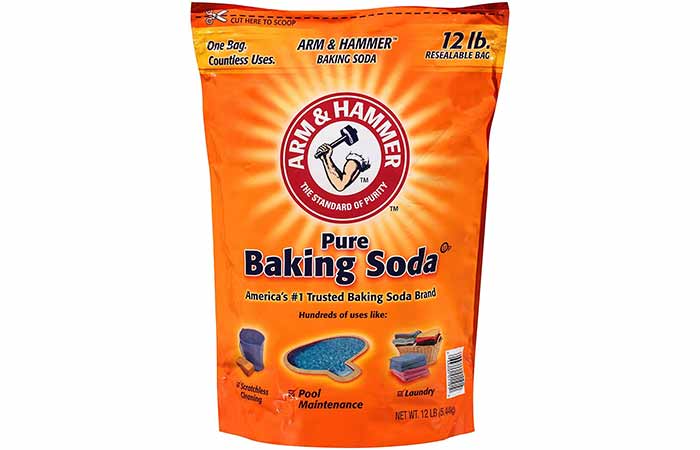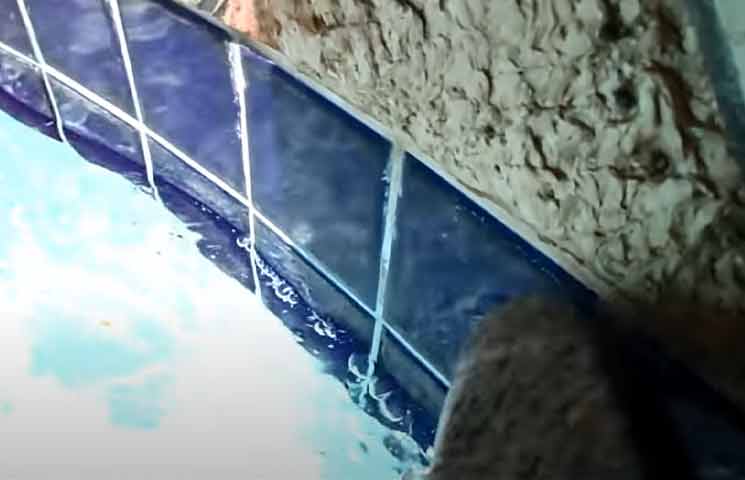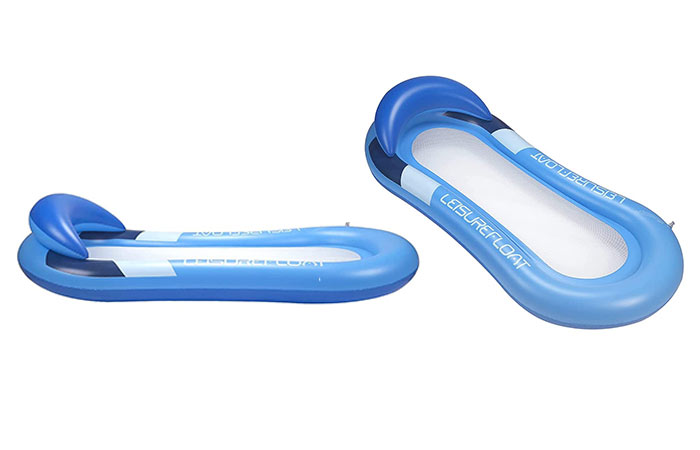Baking Soda in Pool-How much to Raise pH & Alkalinity? Other Baking Soda uses for Pool
If you have noticed that your swimming pool is not as clean or clear as it once was, then you are likely wondering what to do about it. One of the most common reasons for this change in water quality is a lowered pH level. Fortunately, baking soda can be used to raise the pH level of your pool and make it clear once more.
You should add 1.5 pounds of baking soda for every 10,000 gallons of water to raise the alkalinity by 10 ppm. Baking soda should be added to the pool only when the pH is below 7.2. Start by adding 3 to 4 pounds of baking soda to the pool as you take a measure of the pH and ppm levels until you attain the level you want.
The ideal pH level for a pool is between 7.2 and 7.8. When it goes lower than that, it means the pool is more acidic which isn’t good. It’ll increase the rate of corrosion of parts of the pool, cause itching skin and generally make the pool unusable for swimming.
How Much Baking Soda to Use for Pool?
Given that the ideal pH for the swimming pool should be between 7.2 and 7.8, adding baking soda whose pH is 8.3 will raise the pH of the water. The amounts to add are as follows:
- If the pH of the pool is less than 7.2, add 3 or 4 pounds of baking soda.
- If the pH of the pool is between 7.4 and 7.5, add 2 pounds of baking soda.
- If the pH of the pool is above 7.5, don’t add baking soda to it.
Baking soda also affects the alkalinity of the swimming pool. Assuming the pool has 10,000 gallons of water, add baking soda to the pool as follows:
- If the alkalinity of the pool is 20 ppm, add 12 pounds of baking soda to the pool.
- If the alkalinity of the pool is 40 ppm, add 9 pounds of baking soda to the pool.
- If the alkalinity of the pool is 60 ppm, add 6 pounds of baking soda to the pool.
- If the alkalinity of the pool is 80 ppm, add 3 pounds of baking soda to the pool.
- If the alkalinity of the pool is 110 ppm or higher, don’t add baking soda to it.
With the addition of each pound of baking soda to the pool, take a measure of the pH and alkalinity to avoid overdoing it.

Factors that Determine the Amount of Baking Soda to Add
The factors determining the amount of baking soda to add to the swimming pool are the same ones that determine the pH of the pool and they include the following:
Amount of carbon dioxide in the pool
The amount of carbon dioxide in the pool contributes to acidity or alkalinity. The higher the CO² level is, the more acidic the pool will be.
Carbon dioxide mixes with water to form carbonic acid. When carbon dioxide is released from the water, for example, the acidity reduces with the pH being raised in the process.
Amount of algae in the pool
Algae will consume carbon dioxide from the water which will result in higher pH levels. The amount of algae growth is typically measured by monitoring the level of chlorine present and comparing it to a chlorine demand chart specific for pools that contains chloramines, which can be found on any pool supply store’s website.
If there are high levels of both organic debris (algae) and low concentrations of free available chlorine, then add more baking soda as needed.
Alkalinity adjustment chemicals
The chemicals used to adjust the alkalinity of the swimming pool also affect the pH of the pool. Alkalinity adjustment chemicals like sodium hydroxide and potassium carbonate lower the pH of the water.
Alkalinity changers such as calcium hypochlorite have no effect on pH, but they do oxidize organics in the pool which reduces its natural ability to resist algae growth. Algaecides are also important for controlling algae growth because they will kill existing populations before new ones can establish themselves.
For example, AlkaShield is an alkalinity stabilizer that not only adjusts alkalinity levels, but it also helps maintain a stable pH level throughout your swimming season.
Amount of sanitizers used in the pool
Sanitizers also affect the pH of the pool. Chlorine, for example, will reduce the pH of the pool given that it is acidic in nature. The same goes for sanitizers such as trichlor.
The LSI level
The LSI level of the swimming pool can have a big impact on the pH level. The LSI is an index that measures how acidic or alkaline a pool’s water chemistry is. The higher the LSI value, the more alkalinity in your swimming pool water and vice versa.
If you are trying to raise the pH levels then it would be best to use less baking soda as too much will increase chlorine consumption rates to unsafe levels.
It’s also important to keep in mind that if you do not want to add any chemicals at all into your pool (not even chlorine), then neutralizing with baking soda may not solve issues with low pH levels; this is because there are other factors influencing pH besides just total acidity.
How to Add Baking Soda to Pool
The steps to adding baking soda to your swimming pool are as follows:
1. Test the alkalinity of the pool
The first step is to test the alkalinity of your pool. Test kits are available at pool supply stores and online in many different varieties, such as for testing pH levels or calcium hardness.
Another option is to buy an electronic tester like the ones from Taylor Instruments. They have testers that will measure everything from chlorine to total dissolved solids (TDS) contamination levels and even algae growth rates.
The ideal pH level should be between 7.2 and 7.8 with an alkalinity between 110 and 150 ppm. If the pH is lower than 7.2, you will need to add baking soda.
2. Buy baking soda
Next, you need to buy baking soda. While there are different brands of baking soda, they all serve the same purpose.
3. Determine the amount of baking soda to add to the pool
You can use an alkalinity calculator or calculate the amount of baking soda to add to the water as directed above. Basically, 1.5 lbs. of baking soda added to a pool of 10,000 gallons of water will raise the pH by 10 ppm.
4. Add baking soda to the pool
Add baking soda to the swimming pool by sprinkling it evenly from the edges. Do so on a day without strong winds which may instead disperse the baking soda in the air instead of into the pool.
How long to wait after adding baking soda to pool?
After adding the appropriate of baking soda, you need to wait 6 hours so the baking soda can dissolve into the pool water. Add enough baking soda until you reach your desired pH level, and then add salt.
If your swimming pool has a chlorine generator or salt system in place, it’s best not to add too much sodium bicarbonate as this will affect the chemical balance of both systems over time by generating excessive amounts of either light or heavy chlorines which may result in eye irritation for swimmers and an unpleasant odor.
Once the pooled is balanced with your new pH levels, you’ll need to shock it again after 20-30 days because pools lose their acidity quicker than they acquire alkalinity due to evaporation through air exposure (though if you have a solar cover, this will help).
The pool’s pH should be tested once a week. Add more baking soda and/or salt as needed until you reach your desired level of acidity or alkalinity.
However, pools with chlorine generators should have their pH levels checked every other day so they can regulate the amount of sodium bicarbonate in order to keep it at an optimal range for both safety and maintenance purposes.
Effects of too much Baking Soda in Pool
When you add too much baking soda to the swimming pool, the effects include the following:
The pH will be too high
Baking soda is a base and will thus raise pH levels. Baking soda has a pH of 8.3 which is above the recommended level of 7.8 at the maximum pH. pH levels greater than pH of seven can damage the pool paint, tile and equipment.
Parts of the pool will be damaged
If you have a pH that is too high, it will damage the surface of plaster or vinyl pools and make them slippery for swimmers to stand on. The pH will also damage the metal in stainless steel pool components, which can lead to rust and corrosion. Besides that, it will corrode the pool’s tile and liner.
Reduces the effectiveness of chlorine
A pH of 13 or 14 can also significantly reduce the efficiency of chlorine to disinfect water, which will cause a higher risk for bacteria growth in pools.
Reducing the pH to a safe level will help chlorine become more effective.
Reduces effectiveness of algae control chemicals
Algae are an important part of any swift water ecosystem, but they can also be harmful for humans and animals especially in pools with high levels of cyanobacteria (sometimes called “algae”).
The problem is that these microorganisms produce toxins which may cause skin irritation or even lung damage if inhaled. Reducing pool pH will work as a natural algaecide by disrupting their ability to make energy from sunlight.
With too high of a pH, however, controlling algae would an issue since they favor alkaline conditions. Reducing the pH will therefore be necessary to maintain a good balance.
Other Uses of Baking Soda in Swimming Pools
Besides simply raising the pH of the swimming pool, baking soda can be used in the following ways in the pool:
Remove algae from the pool
Baking soda is also used to remove the green algae that can grow in pools. Remove dark, sunken patches and stains from tiles with baking soda. Simply sprinkle some on the affected area, wait for a few hours before scrubbing it up with water or a brush – use soap if desired.
Prevent corrosion of parts of the pool due to acidity
Another use for baking soda in a swimming pool is to prevent corrosion of parts of the pool due to acidity. Preventing corrosion will extend the life of your equipment and make it easier for you to maintain your water quality throughout all seasons.
If the pool is too acidic with a low pH level, adding the needed amount of baking soda will balance the pH out thus preventing corrosion of the ladders and other parts of the pool.
Clears cloudy pools
Baking soda can also be used to clear up cloudy pools. This is due to the fact that baking soda contains sodium bicarbonate, which will create a chemical reaction when it meets chlorine in the pool water.
It converts into carbon dioxide and sodium chloride (table salt) which then becomes trapped on surfaces of the particles suspended in your swimming pool’s water thus preventing them from appearing as haze.
To do so: add one tablespoon of baking soda per ten gallons of liquid for every thousand square feet (0.13m) of surface area within 24 hours; stir well and wait 12-24 hours before assessing the results.
Further Reading: Best Homemade Pool Clarifiers
Removing calcium buildup in the pool
You can also use baking soda to clean up calcium buildup in pools. If you have a saltwater pool, it is important to keep the pH level low so as not to corrode your equipment or clog your filters and pumps with calcium build-up.
Baking soda can be added directly into the skimmer basket or even sprinkled over the surface of the water for hidden areas that need cleaning too.
It will also remove any chlorine odor from stagnant water left out after swimming.







